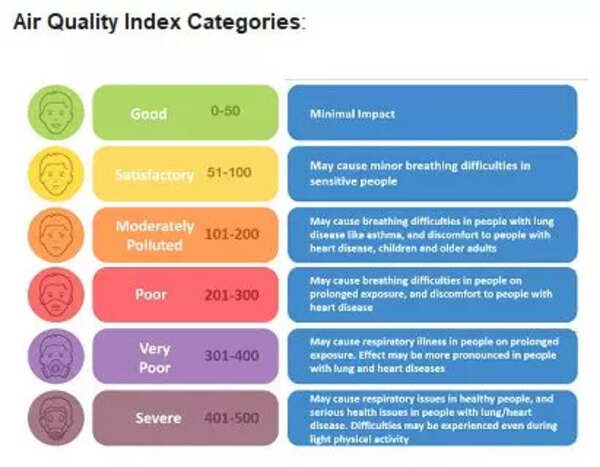Air Quality in summers
Summer is prime time for renovation but as a result, the colourless gas, formaldehyde, can be released from some forms of furniture, insulating materials, paints, and varnishes. Some air conditioners too remove humidity from the air as a natural by-product of cooling, impacting comfort within the home. Growing heat stress and increased emission from vehicles accelerate ozone build-up in summer, so much so that they may even violate ozone standards.
Air quality in autumn
Cold weather and short days prompt us to spend more of our time indoors. Modern homes are well-sealed so indoor pollutants from activities like cooking and cleaning can build up indoors. Autumn also gives rise to the ragweed plant, which can produce up to 1 billion pollen grains, attaching easily to things like hair, shoes and clothing and potentially triggering seasonal allergies. Autumn allergens, dust mites, and wildfire smoke are serious air quality concerns that affect all people.
Air quality in winter
Cold air can get trapped beneath warm air in colder months, in a process called temperature inversion. The warm air above the cooler air acts like a lid, suppressing vertical air mixing which means that emitted pollutants can get trapped near the ground, encouraging poor air quality. Seasonal drop in temperature, smoke from stubble burning, Diwali firecrackers and festive cooking, opting to take your car rather than walk due to the colder weather heightens exposure levels and entraps pollution throughout India. Central heating and cold air can lower the amount of moisture in the air, reducing humidity levels and impacting comfort and wellbeing indoors.
Air quality in spring
Invisible pollen particles, from trees and grass, can travel for miles – sticking to clothes and hair and triggering allergies. In certain regions, fine sand or dry soil particles are blown up through the sky by spring winds and spread through the atmosphere before falling to the ground. About 20-30 per cent of the population suffers from allergic rhinitis in India, and approximately 15 per cent develop asthma7. Pollen is considered a major outdoor airborne allergen responsible for allergic rhinitis, asthma, and atopic dermatitis in humans.
What can I do to improve indoor air quality exposure
Fortunately, there are a number of ways to help improve your personal air quality exposure. Reducing pollution sources – such as aerosol sprays and candles within your home is a good start, as well as adapting your routines to include fewer polluting activities. When cooking with frying oil, make sure to use suitable ventilation, or a purifier or open a window if the outdoor air pollution is suitable but also be careful of letting fresh air in as it could be an entryway for outdoor pollutants. Using a purifier is another way to control your indoor air quality.

!(function(f, b, e, v, n, t, s) {
window.TimesApps = window.TimesApps || {};
const { TimesApps } = window;
TimesApps.loadFBEvents = function() {
(function(f, b, e, v, n, t, s) {
if (f.fbq) return;
n = f.fbq = function() {
n.callMethod ? n.callMethod(…arguments) : n.queue.push(arguments);
};
if (!f._fbq) f._fbq = n;
n.push = n;
n.loaded = !0;
n.version = ‘2.0’;
n.queue = [];
t = b.createElement(e);
t.async = !0;
t.src = v;
s = b.getElementsByTagName(e)[0];
s.parentNode.insertBefore(t, s);
})(f, b, e, v, n, t, s);
fbq(‘init’, ‘593671331875494’);
fbq(‘track’, ‘PageView’);
};
})(
window,
document,
‘script’,
‘https://connect.facebook.net/en_US/fbevents.js’,
);if(typeof window !== ‘undefined’) {
window.TimesApps = window.TimesApps || {};
const { TimesApps } = window;
TimesApps.loadScriptsOnceAdsReady = () => {
var scripts = [‘https://static.clmbtech.com/ad/commons/js/2658/toi/colombia_v2.js’,
‘https://www.googletagmanager.com/gtag/js?id=AW-877820074’,
‘https://imasdk.googleapis.com/js/sdkloader/ima3.js’,
‘https://tvid.in/sdk/loader.js’,
‘https://timesofindia.indiatimes.com/video_comscore_api/version-3.cms’,
‘https://timesofindia.indiatimes.com/grxpushnotification_js/minify-1,version-1.cms’,
‘https://connect.facebook.net/en_US/sdk.js#version=v10.0&xfbml=true’,
‘https://timesofindia.indiatimes.com/locateservice_js/minify-1,version-12.cms’
];
scripts.forEach(function(url) {
let script = document.createElement(‘script’);
script.type=”text/javascript”;
if(!false && !false && url.indexOf(‘colombia_v2’)!== -1){
script.src = url;
} else if (!false && !false && url.indexOf(‘sdkloader’)!== -1) {
script.src = url;
} else if (url.indexOf(‘colombia_v2’)== -1 && url.indexOf(‘sdkloader’)== -1){
script.src = url;
}
script.async = true;
document.body.appendChild(script);
});
}
}

